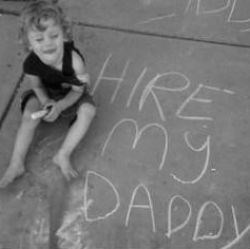by Paul Slaybaugh | Jun 22, 2010 | Home Buying, Home Selling, Scottsdale Real Estate
So you have 20% to put down for a single family home in Scottsdale AZ. Your FICO scores are higher than Willie Nelson on Bob Marley Day in Montego Bay. You have been gainfully employed in the same W2 position with the same company for years. The American Express card with a $124 balance and the $112 payment on your 2002 Honda Accord make up the sum total of your earthly debt. Congratulations, you are one of the few buyers in today’s market in a position to call your own shots.
Surely the right play is to go the conventional financing route, right?
No private mortgage insurance, the lowest possible rate, less red tape than government sponsored financing vehicles.
From a strictly cost-based approach, all signs point to a nice, vanilla 30 year fixed conventional loan at a microscopic rate as the biggest no-brainer in the history of money.
Of course, as we have learned all too well, there is more to your choice in financing than today’s consideration. In fact, there is more to your choice in financing than even the total cost to you over the life of the loan. While we may not know where the market and its attendant values are heading, one fact is indisputable:
Interest rates will rise.
Maybe not today, maybe not tomorrow, but soon. Inflationary pressure makes it inevitable that rates will take off at some point. All of the warning signs are there. It will happen. Rather than banging the tired gavel of “buy today, rates on the way up,” let’s steer the discussion in a less self-serving direction.
Q: What is today’s buyer?
A: Tomorrow’s seller.
If you are buying a home in 2010, you need to consider the market forces that may shape 2015 or 2020. When we agents prognosticate, we tend to focus exclusively on home values. This is a fool’s errand. What we really should be thinking about is the buyer pool’s (in)ability to buy.
If interest rates manage to climb into the double digits in several years’ time, the difficulty of selling the property you are buying today may be compounded by a further contraction of able buyers. How does one counteract the specter of such a looming boogeyman? By going back to the future for familiar, but forgotten solutions to a similar problem.
What saved home sellers in the era of 18-20% interest in the ‘70s and ‘80s? Owner financing and assumable loans. For the purpose of this post, I wish to focus on the latter.
With the low to zero down conventional financing options in the market for my first decade in the business, it was a rarity to consummate a transaction with anything other than non-assumable financing. Now that FHA loans have forcefully elbowed their way back into the marketplace, however, assumable financing has returned. Most borrowers are not considering this aspect of the financing in the least, mind you. They simply jump on whatever they can qualify for that provides the least cost and lowest rates. I maintain that the assumable nature of a loan will be incredibly important moving forward.
While a new buyer would have to qualify for the loan to assume it, imagine how much wider your future buyer pool will be with such an option in place. Your 30 year fixed at 4.75% may not look quite as good to you if you find yourself in a position in which you have to sell your home in the midst of 12% interest rates. Not to sound the bell of an alarmist, but it’s not difficult to foresee a future in which many buyers who have migrated to the security of 30 year fixed conventional mortgages in the wake of the mess spawned by more creative financing find themselves imprisoned within those non-assumable safety nets.
Moving forward, your mortgage might not just be your mortgage. It could potentially be your future buyer’s. As such, when shopping for financing, there is more to consider than just the nuts and bolts of your own cost. Your mortgage could eventually prove either an enticement or a hurdle to a sale.
Heady stuff.
I will close with that which should have served as a preface: I am not a mortgage professional. DO NOT rely on my speculation in any manner when making a choice in financing. The nuances and new rules/regulations in the financial world are changing so fast that even those who wade in those murky waters on a daily basis are having a hard time keeping their raft of sanity afloat. For some, the internal debate is academic anyway, as there are qualification constraints on all financing types. Only your lender, with a full view of your financial picture can provide competent advice as to which programs you may ultimately qualify for, and which is the best fit for you. I do, however, want you to add this question to the typical inquiries about rates, fees, penalties, etc when speaking with your chosen loan officer:
“Is this loan assumable?”
I expect it will matter more than the attention it is currently being afforded in most Real Estate circles.

by Paul Slaybaugh | Jun 16, 2010 | Home Selling, Scottsdale Real Estate
Among the interesting turnabouts that abound in the Scottsdale Real Estate market as of late, the rental market has demonstrated surprising new strength. Where there was formerly a preponderance of housing options for prospective tenants over the last couple of years, what with all the struggling homeowners out there eager to find someone else to pay their mortgage while they shacked up in less costly digs, a noticeable contraction in available properties for lease is occurring. With more and more people walking away from their upside down homes, whether by necessity or by choice, the credit and financial hits they take in the process renders them radioactive to the purchasing option for years to come (though, some have perfected the “buy and bail” strategy of purchasing a new home before abandoning the current residence). As such, the rental market has become inundated with demand.
With this surge in demand and a subsequent decrease in supply, rental values have not only held firm, but have noticeably increased in the markets I work. From a purely anecdotal standpoint, I have been shocked by the level of competition for not only the properties I have had listed for lease recently, but for the tenants I have worked with to secure rental properties as well. Mind you, I am not simply referring to the low end pricing (sub $1000/month) where heightened competition is always to be expected, but in more expensive price ranges to boot. In particular, I am seeing a LOT of interest in properties that are renting in the $1400-1800 per month range.
Checking the latest statistics to see if what I have noticed is playing out on a larger scale, I see active Scottsdale rental listings are down to roughly 1800 units (as of ARMLS’s May figures). This marks a steady decline from an inventory that reached a high point of 2568 in November of 2008 and did not dip under the 2000 unit threshold until January 2010. The 5.19 months of rental housing supply (as determined by the current rate of absorption) is at its lowest point in years. Interestingly, the overall average rental rate has not shown a noticeable jump, despite my recent personal observations. Given the decrease in total inventory and increase in absorption (units leasing per month), however, I fully anticipate next month’s numbers to reflect a higher baseline average.
This shift in the rental market tells me two things:
1) Before deciding to walk away from a house that appears irretrievably underwater in terms of negative equity, homeowners (and potential future renters) really need to study their options carefully. If I had a nickel for every misguided homeowner who erroneously believed there was an unmitigated plethora of housing options, at bargain basement prices, waiting for them once they pulled the plug on the Bank of Extortion … er, I mean “America” … I could comfortably retire to my literary tinkerings. The assumption that lower selling prices go arm in arm with lower rental rates is patently false. Further, with all of the newfound competition for rental housing, your chewed up credit report will be scrutinized a bit more by potential landlords than most would expect. Sure, a human landlord may be more understanding of the recent economic woes than some faceless underwriter, but as in any free market, it always comes back to options. If there are renters out there with fewer credit issues and deeper pockets, you are going to get aced out. Please consider where your escape pod is heading before abandoning ship and scuttling that home turned financial Death Star. If there is no soft landing, how have you benefitted?
2. Our market may have reached (or is close to reaching) that sweet spot in which it makes sense for the homeowner with designs on a move-up purchase to revisit the rental potential of his/her existing home. While the notion of renting an existing house out (to offset the mortgage) to free oneself up to take advantage of the market conditions and purchase a considerably larger home for a fraction of its prior value is nothing new, the increasing strength in the rental market makes the strategy more feasible at present. The biggest hurdle to this play, other than deciding whether one is really cut out to become a landlord, remains the qualification process. Unless you are one of the fortunate few who maintain at least 25% equity in your home, you will essentially have to qualify to carry both loans (the existing house as well as the new one you would purchase). Even if you secure a tenant whose rent will cover the payment, you will be qualified for the new loan as if you were qualifying for both properties. If you have the means to do so, the time could be right to finally leverage the conditions that seemingly everybody and their brother’s mail carrier have already managed to exploit.
Whatever your goals for the Scottsdale Real Estate market, drop us an email or give us a call with your specific needs / questions. You might not be as trapped as you think.

(480) 220-2337 | paul@scottsdalepropertyshop.com

by Paul Slaybaugh | May 10, 2010 | Scottsdale Real Estate, This & That
Real Estate Investor.
The phrase alone inspires a host of reactions that run the full gamut between antipathy and, well, slightly lesser antipathy, depending on the audience.
As any semi-interested news watcher and industry blog reader can attest, the Real Estate investor is the greatest scourge to befall our fragile ecosystem since polybutylene plumbing. What, with the housing supply lines ill-equipped to handle the artificial demand, our flimsy pipes swell and burst when the pump and dump investment surge strikes a hapless market. Aside from the banks who flooded Wall Street with dubious mortgage backed securities that were chopped and reconstituted in more numerous and indiscernible ways than Joan Rivers’ alleged face, the fount of no-money-down investors is the most vocally derided catalyst of the Great Real Estate Bubble of 2005 ©.
Well, guess what? The investor is back … and that’s a good thing.
Hold your rotten tomatoes and easy with the pitchforks, if you will. How can I possibly opine that the reemergence of the buyer subset that sent values through the roof, only to crash them through the basement when they left a valley of foreclosed “investments” in their wake is a good thing? Is the demand any less artificial now than it was when the previous incarnation of ne’er do wells spiked our collective punchbowl?
In a word, yes.
 The 2010 investor is not the fly-by-night operator who purchased the nearest home for sale at the conclusion of a four hour seminar on how to get rich in Real Estate investing with no money down. Shoot, who needed money down when you barely needed a pulse and a job to buy a house back then? No, today’s investor, by and large, is showing up at trustee sales and plunking down cash on a barrel. He has the skin in the game that his counterpart of yesteryear did not. He is investing in a very real sense of the word.
The 2010 investor is not the fly-by-night operator who purchased the nearest home for sale at the conclusion of a four hour seminar on how to get rich in Real Estate investing with no money down. Shoot, who needed money down when you barely needed a pulse and a job to buy a house back then? No, today’s investor, by and large, is showing up at trustee sales and plunking down cash on a barrel. He has the skin in the game that his counterpart of yesteryear did not. He is investing in a very real sense of the word.
In addition to securing an interest in the property with his own bankroll (thus making the prospects of simply walking away from a property that doesn’t return as hoped less palatable), the other crucial dynamic at play is the return of sanity to the overall investment arena. When investors were driving Scottsdale and Phoenix property values into the stratosphere back in 2005, there was little regard to the initial purchase price. Our entire market temporarily forgot that you make your money on the purchase. Buy a property right, and the return will be there when it’s time to sell. In the throes of insanity, investors were climbing over themselves and each other to purchase property, any property, for 50k over whatever ludicrous price was being sought by an apoplectic seller. Investors were betting on the come. Pay whatever now, and the joint will be worth 100k more in two months whether a hammer is ever swung in renovation or not. With the year long fervor, they got away with it … for awhile.
Today’s investor is not settling for just any property he can get his hands on, but is showing up at the courthouse and robbing the bank blind. Paying pennies on the dollar and rehabbing a previously dismantled home, his margin is large enough to bring the distressed apple of his eye to market at a price actually supported by recent sales comps.
The coup de grace? Today’s investor fills a need that the banks won’t. He is essentially financing the fix-up costs that many banks have abandoned in self-defense. Against a backdrop of tight lending purse strings, consider the difficulty many people have just in coming up with 3.5% or 20% down payments, let alone remodeling capital. With home equity lines all but vanished from the marketplace, that stripped bank-owned home bargain isn’t all that realistic for the buyer who doesn’t have the available cash to put it back together, regardless of how appealing the price tag. When you could tap a line of credit to finance improvements, it wasn’t that big of a deal to throw in some new carpet, counter tops and appliances after closing. Now, you have few options other than reaching into your own pockets. Thus, there is a sizable buyer pool for a move-in ready home. The well heeled investor who assumes the risk and fills that need is not to be derided.

Take the mom & pop homeowners who are unable to price their homes competitively due to high loan balances, mix with the interminable wait of short sales, fold in the distressed condition of much of the bank-owned inventory and bake at four hundred degrees to create a casserole of supreme frustration for many disenchanted home shoppers. A rehabbed home at an affordable price, if not the outright theft that was envisioned at the outset of their house hunt, begins to look more and more appealing to many buyers after getting an up close look at what the reputed bargains actually look like live and in color. In essence, by purchasing a property from an investor, a buyer has found an end-around to financing renovation costs.
If your last nickel is earmarked for your down payment, and you can purchase a renovated home at a fair market value that you can afford, don’t begrudge the man his margin. While the stereotype of the lecherous vulture remains, we would be remiss not to acknowledge the good he can, and does, bring to a market like ours.
Investors: they’re not just for nuclear Real Estate holocausts anymore.








